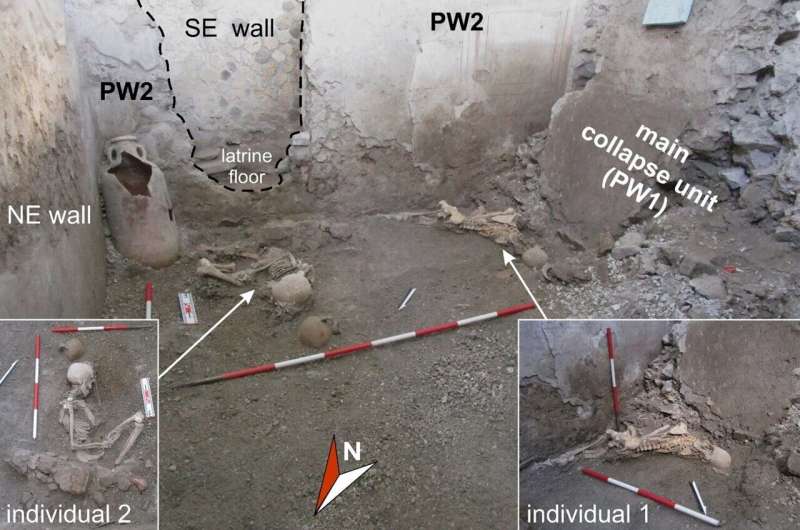Location of the skeletons discovered in room A. Credit: Pompeii Archaeological Park.
Back in 79 CE, Pliny the Younger vividly described the trembling earth during the eruption of Vesuvius. A recent collaborative study led by researchers from INGV and Pompeii Archaeological Park has delved into the seismic effects associated with this historic event.
This groundbreaking study is the first of its kind to explore the intricate relationship between earthquakes and volcanic eruptions. Understanding this dynamic is crucial as volcanic and seismic activities can occur simultaneously, potentially influencing each other’s impact.
“Deciphering these complexities is akin to solving a puzzle where every piece is essential to unveil the complete picture,” explained Dr. Domenico Sparice, a leading volcanologist at INGV-Osservatorio Vesuviano and the primary author of the study. “Our findings highlight the significant role of seismic activity in the devastation of Pompeii and how it may have influenced the decisions made by its inhabitants facing imminent peril.”
“It is imperative to accurately identify the cause-and-effect relationships to reconstruct the intricate interplay between volcanic and seismic events, and their consequences on structures and human lives,” added Dr. Fabrizio Galadini, a senior geologist at INGV and co-author of the study.
During the excavation of the ”Casa dei Pittori al Lavoro,” anomalies in the collapsed structures caught the researchers’ attention. Dr. Mauro Di Vito, a volcanologist and director of INGV-Osservatorio Vesuviano, noted, “The peculiar characteristics observed did not align with typical volcanic effects documented in Pompeii’s geological records, prompting us to seek an alternative explanation.”
The discovery of two skeletons exhibiting severe fractures and trauma further fueled the team’s determination to uncover the underlying causes.
2024-07-18 01:15:03
Link from phys.org
